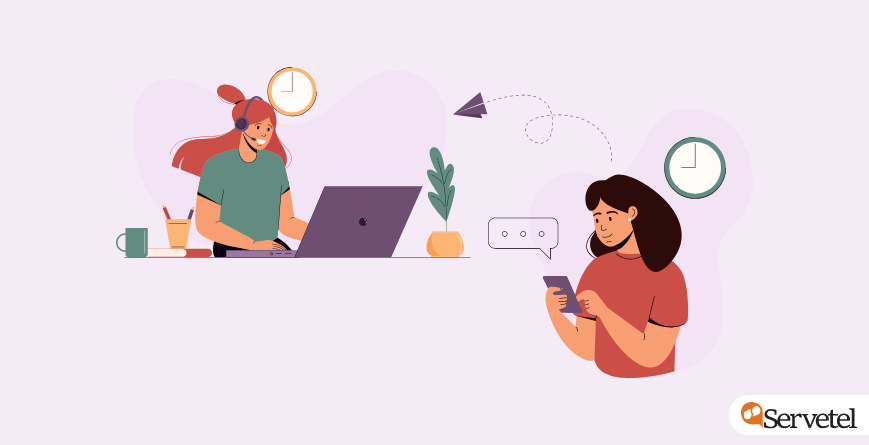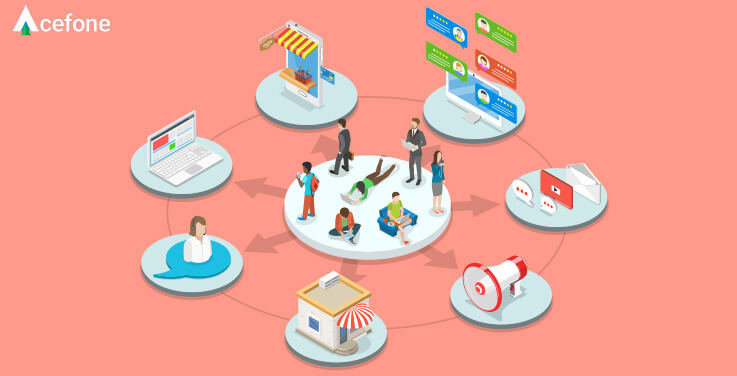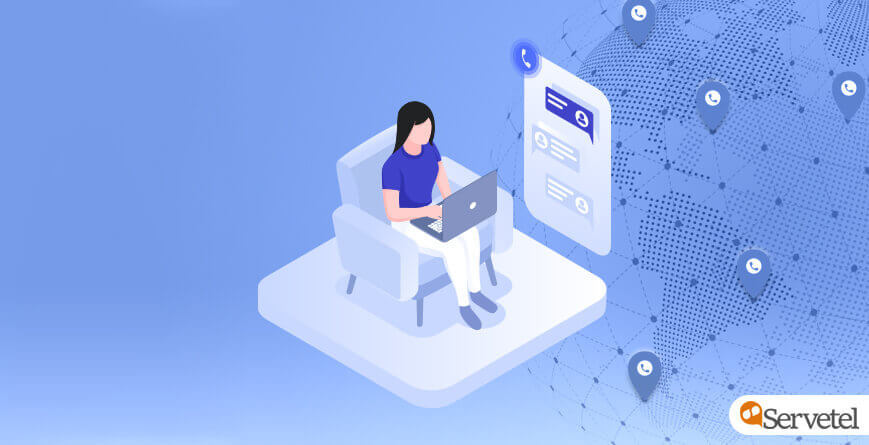Customer Engagement for Flawless CX
With over 214 million businesses worldwide, customers have the power to buy from anywhere, anytime. The only way you can stand out from the crowd is by offering flawless customer service.
In fact, a study by Forbes states that 84% of the people surveyed believe AI can help them gain a competitive advantage and sustain better.
All buyers can be broadly categorised into four types: prospective customers, current customers, customers who have been loyal and former customers. To design an inclusive and holistic customer service model, strengthening customer experience is necessary.
Turning prospects and current customers into loyal buyers needs time, effort and attention. Your vision can come to life with technological solutions like Interactive Voice Response (IVR).
Inbound and outbound IVR calling comes with features that let companies engage with all four kinds of buyers.
How do IVR services help?
Customers today demand instant solutions to all their concerns, and if you fail to do so, they quickly move to the next company they find on the Internet.
This is where IVR comes to your rescue.
An Interactive Voice Response system integrated with the call centre not only acts as a virtual receptionist but also offers quick solutions to all kinds of customer queries.
Put simply, IVR number helps you answer inbound calls and automate outbound calls that consist of pre-recorded messages to convey important information to consumers.
These services help businesses and buyers save time and energy.
Not to forget, they help you offer round-the-clock assistance from anywhere around the world.
Outbound and inbound IVR: definitions and benefits
Traditionally, IVR services mainly catered to inbound calling.
But with time and the evolution of technology, IVR now comes in handy for outbound calling as well. So, instead of waiting for your buyers to reach out to you, you can simply take the first step towards them.
A balanced inbound and outbound IVR service helps serve numerous purposes in the call center. Here’s how:
Inbound IVR
Inbound IVR lets callers seek solutions by navigating them through a series of options. It understands their issues through DTMF tones or voice recognition and routes them to the agents that best suit their needs.
Scenarios where inbound IVR proves to be very useful for business include:
1. Automated customer assistance
Handling multiple calls at once, especially during rush hours, can be stressful for your agents. However, Inbound IVR calling can help them attend bulk calls simultaneously.
Callers are prompted to choose the most relevant option from a list of possible solutions using their mobile devices. And based on how the call continues, it intelligently routes them to suitable agents.
Some of the concerns that IVR can handle include shipment updates, payments, track delivery, custom offers, etc.
Businesses with devoted contact center for customer support can hugely benefit from inbound and multi-level IVR systems.
2. Facilitating inbound sales
When information about offers and deals are conveyed to consumers via emails and SMSes, businesses can add their virtual numbers for the ease of customers.
The IVR system can analyze incoming caller details to determine if it passes as a pre-qualified lead. If a lead attains considerable scores on essential metrics, the call can be routed over to a relevant agent.
Benefits of inbound IVR
1. Intelligent call routing: Interactive Voice Response (IVR) facilitates extremely effective call routing within the contact center of the organization. With self-service tools for customers, agents can focus on calls that require enhanced attention and understanding.
This reduces their workload and keeps them from burning out from repetitive tasks like answering FAQs. This also helps build a better customer experience by shrinking waiting time and reducing difficulties for first-time callers.
2. Useful metrics and cost-effectiveness: Inbound IVR calling is also equipped to record incoming calls and track other metrics like call duration, wait times, first call resolutions, etc.
By evaluating these metrics, your business can focus on adding value to its customer experience model, enabling you to convert more buyers into loyal customers.
With the added advantage of automation, the burden for recruiting more agents and costs incurred by infrastructural expenditure also gets drastically reduced.
Outbound IVR
The push and pull model are the most common strategy for customer acquisition.
Push marketing is when a business makes proactive efforts for customers to buy its products. On the other hand, when customers seek a brand’s products because they make a positive difference in their lives, it is pull marketing.
Using outbound IVR service for pull marketing can help automate engagement activities via various sources like calls, email, social media etc.
Scenarios where outbound IVR proves to be very useful for business include:
1. Sending out surveys
Collecting customer feedback regularly is conducive to a business’s growth and automating calls using outbound IVR helps reduce dependence on support agents.
Outbound IVR automatically reaches out to consumers who have recently purchased from a business to collect input. Collecting feedback using IVR surveys is an effective way to keep in touch with consumer emotions and expectations.
Insights from this data can help your organisation pay more attention to what your consumers want and initiate tactful pull marketing.
2. Sending promotional updates
Using automated calls and emails to inform customers about your organization’s future plans can be a great tactic for push marketing.
These outbound IVR calls can play a pre-recorded message to the customer and prompt them to a number that they can call to interact with an inbound IVR system.
This method of marketing can help your business reach a wide base of target consumers while also being extremely fast and cost-effective.
3. Sending important reminders
Outbound IVR service can send reminders regarding pending payments, renewing subscriptions, etc. to both customers as well as prospective buyers. In addition to this, outbound calling also enables them to do complete activities like bill payments using IVR itself.
Reminders can also be sent to people who were open to communicating with the brand but did not act upon it. They can be prompted about offers and promotions, finishing their registration with a business, etc.
Apart from the ease and convenience, outbound IVR also helps enhance the techniques of pull marketing.
Benefits of outbound IVR
Since outbound IVR service can do all of the above without requiring continuous human presence, it helps companies save up on large amounts of time and money. A robust IVR system also adds value to the brand image given how many modern-day consumers expect instant gratification and a satisfying overall experience.
In a nutshell
The strength and repertoire of a business largely depend on its ability to retain loyal customers in the long run. According to Microsoft’s State of Global Service Report, 56% of global participants have withdrawn themselves from a brand after a poor customer service experience.
Investing in the right kind of IVR services and installing a careful mix of both—inbound and outbound—will go a long way in deciding your organization’s growth and progress.
The pros of IVR services are innumerable, regardless of the size and operation of a business. Even if your organization is highly scalable with plans to expand in the near future, solutions like multi-level IVR can come to your rescue.
In a fast economy where customers are bombarded with a myriad of options to choose from, using an IVR to improve efficiency and provide an enhanced customer experience can have the right impact on your business’ growth.
Get your IVR today. Contact our experts at [email protected].














